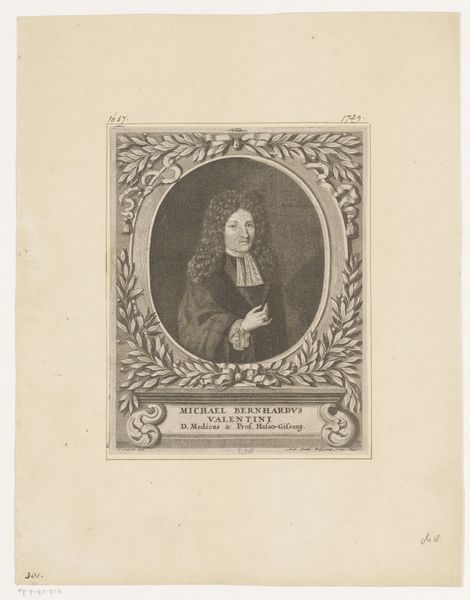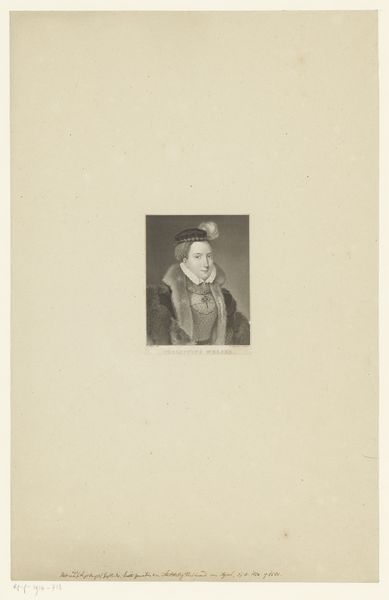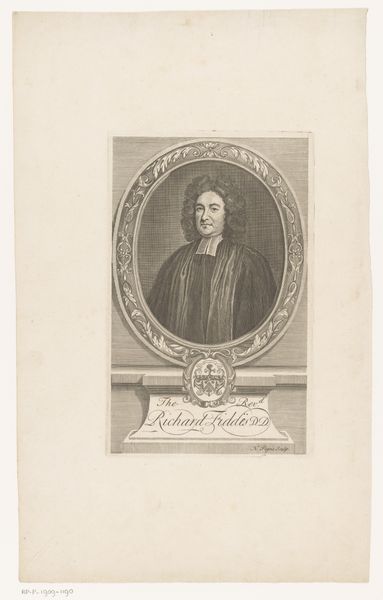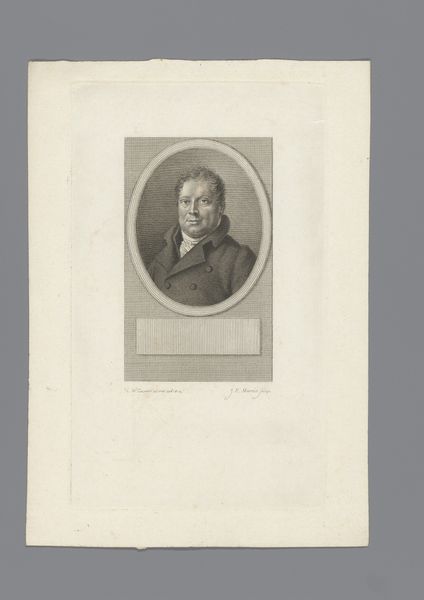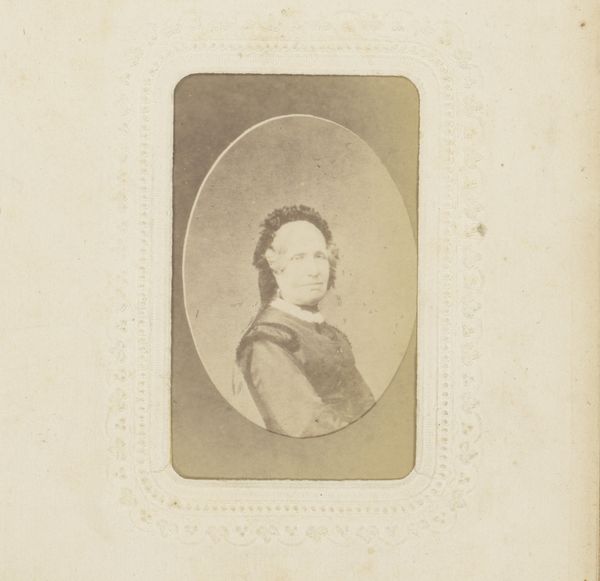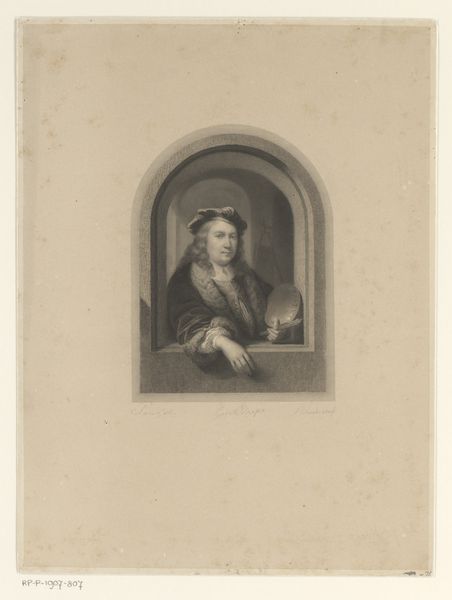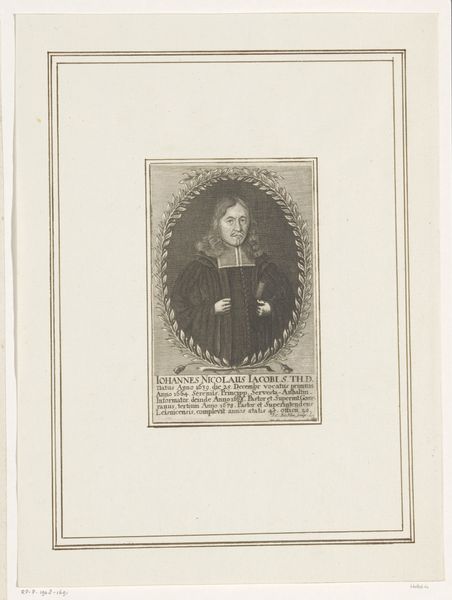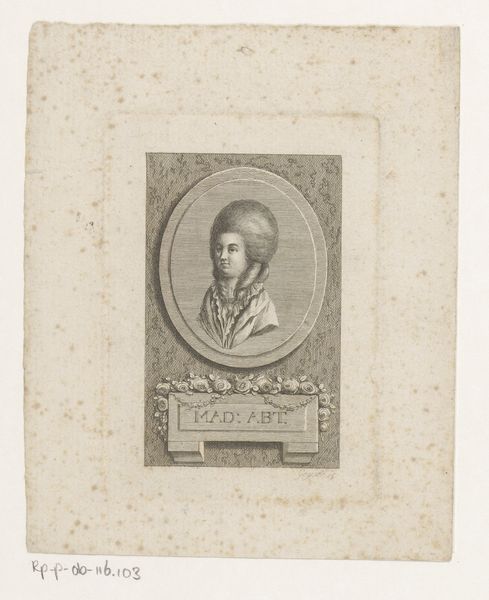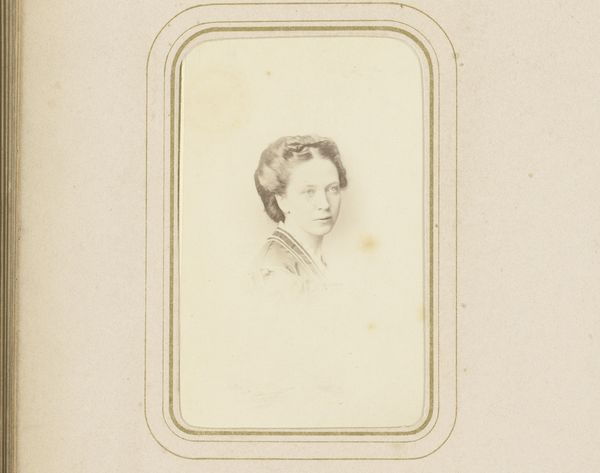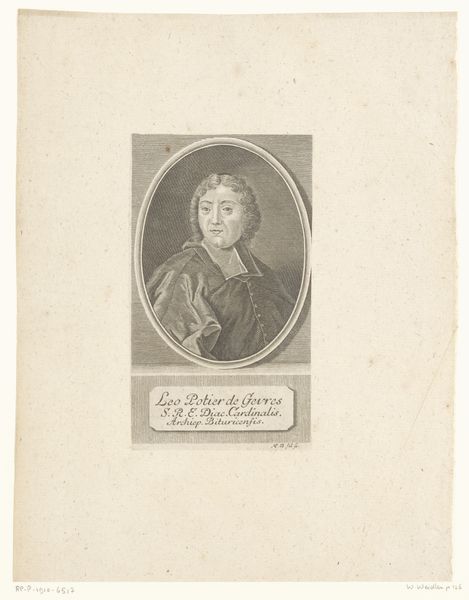
print, engraving
#
portrait
# print
#
engraving
#
realism
Dimensions: height 152 mm, width 102 mm
Copyright: Rijks Museum: Open Domain
Editor: So, this is a print titled "Portret van Marie Antoinette de Milhau," dating from somewhere between 1850 and 1900 by Tiburce de Mare. It looks to be an engraving. It has a sort of formal, stately feel. How do you interpret this work? Curator: Given the context of the time, particularly the proliferation of portraiture thanks to advancements in printmaking, we must consider this image’s role in society. These prints were often commissioned to disseminate an image of power, status, or lineage. The meticulous engraving, the subject's dignified bearing, and the inclusion of what appears to be a family crest, all reinforce this function. But consider – why was she being presented and to whom? Editor: That's a good point! The crest implies a connection to nobility or a family of importance. Was this type of portraiture accessible to the masses or more geared toward those within similar social circles? Curator: Initially, the production cost may have limited wide distribution. However, such images often circulated among elite circles and served as visual reminders of social hierarchies and familial ties. The very act of commissioning and displaying such a print speaks to the subject's aspiration to be remembered, perhaps even emulated. Does the style remind you of a particular artistic movement prevalent at the time? Editor: It definitely leans into Realism. The detail in her features and clothing seems focused on portraying her accurately. Is that an attempt to legitimize her position or present her in a particularly favorable light? Curator: The commitment to realism does not necessarily negate idealization. Think of how powerful social and institutional narratives could be conveyed through these "realistic" depictions. Did it present an 'accurate' view or an enhanced social performance, tailored for public consumption? The interplay is very important to appreciate. Editor: I see your point. It’s fascinating to consider the print as a calculated performance of social standing rather than just a simple likeness. Thanks for walking me through that. Curator: Indeed! By examining such artworks through a historical lens, we unearth narratives far beyond their aesthetic appeal.
Comments
No comments
Be the first to comment and join the conversation on the ultimate creative platform.
